How can harvest help determine future insect pressure in corn?
October 30, 2023
While harvesting corn, combine operators should know how to recognize certain insect feeding injuries. Though the insect may no longer be present, injury symptoms may well be noticeable. If symptoms are present, proactive insect management—including scouting—should be considered for the next crop year.
Missing plants or skips within row
Early season injury from white grubs or wireworms could cause missing plants or skips within a row. As these insects usually occur in the same fields over time, management tactics should be considered in the next growing season.
Random ears are banana shaped or have random discolored kernels
Brown, green, or brown marmorated stink bug feeding is a likely cause of these symptoms (Figure 1).1 Heavy stink bug pressure early in the season can lead to deformed, banana-shaped ears (Figure 2). Random kernels may have scars, holes in kernel caps, or appear bruised and dark (Figure 3). Kernels may be mottled in appearance, especially close to the tip of the ear. The following crop should be closely scouted for stink bug damage and managed accordingly, especially if the field has a history of damage.
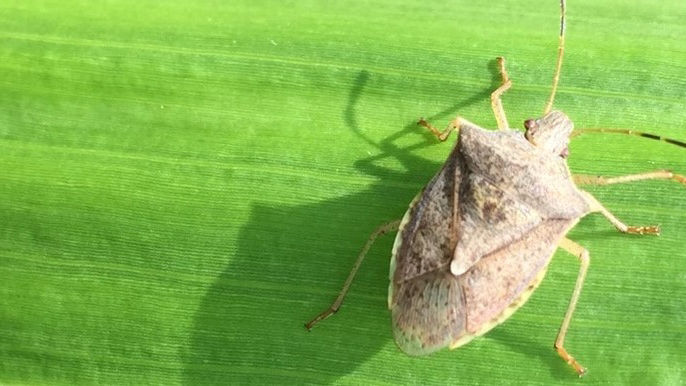
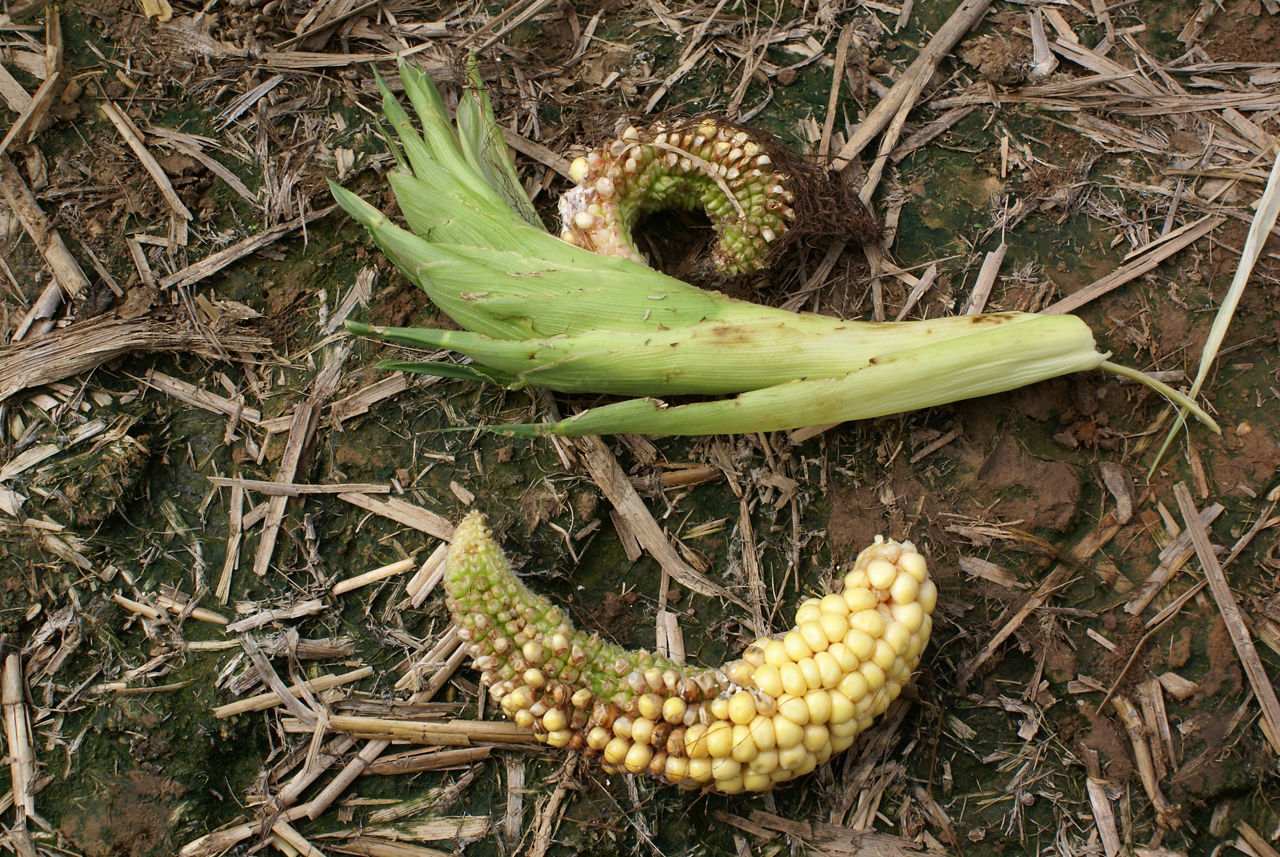

Kernels are damaged by larval feeding and/or have fungal growth
Mid- to late-season kernel feeding from corn earworm (Figure 4), fall armyworm, western bean cutworm (Figure 5), and European corn borer (Figure 6) can directly damage corn kernels by feeding on them, and indirectly lead to increased incidence of disease and rot.4 When kernel feeding begins during the milk stage of kernel development, the leaking milk provides a favorable substrate for fungal growth which can then damage neighboring healthy kernels (Figure 4). Above-ground Bacillus thuringiensis-protected (B.t.-protected) corn products may resist some or all of these insect larvae. However, large moth flights of corn earworm can indirectly damage B.t.-protected corn. These moths may produce unusually high numbers of larvae, potentially leading to cannibalism among the larvae which further allow the surviving larvae to grow to a large enough size to tolerate the B.t. toxin, resulting in subsequent damage.
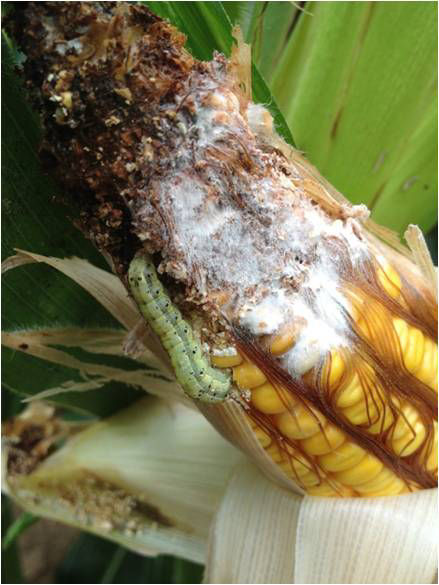

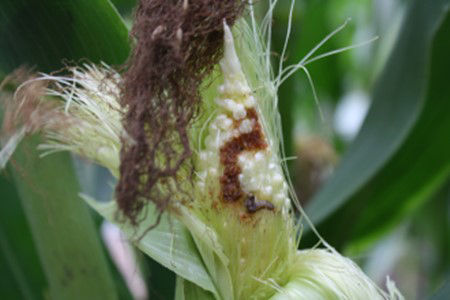
Evidence of incomplete pollination
During pollination, insect feeding on green silks can prevent ovule (potential kernel) fertilization if the pollen tube, which is attached to an ovule, is cut. This can occur when silks are clipped to less than ½-inch long. Although the silk-clipping insects are no longer a threat to a crop being harvested, scouting for grasshoppers, corn rootworm beetles, corn earworm, and Japanese beetles should be conducted the following year (Figures 7 and 8).4
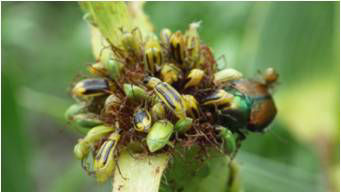
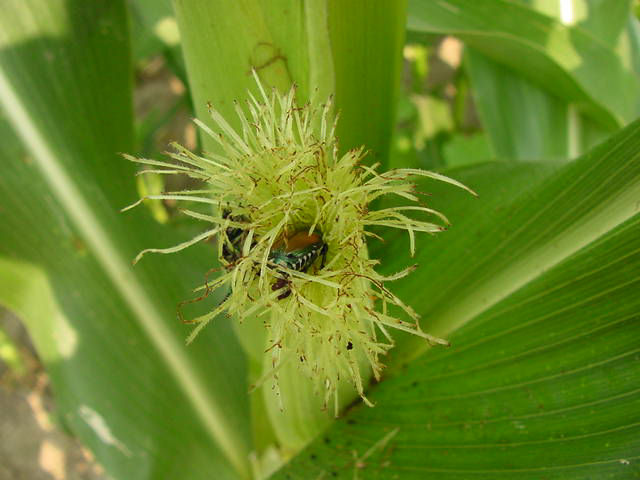
Stalk or root lodging
Stalk- and/or root-lodged corn can cause substantial harvest delays and losses. European corn borer (ECB), southwestern corn borer (SCB), and common stalk borer feeding can weaken stalks and increase the potential for lodging via wind and heavy rain. Holes in the stalk rind and ear shanks are evidence of European corn borer feeding (Figure 9, left). Dropped ears with tunneled-out shanks, broken tassels, or missing tassels can also be evidence of ECB feeding.
Stalks cleanly broken off just above the brace roots are characteristic of southwestern corn borer feeding (Figure 9, right). SCB tunnel downward into the brace roots and generally stay low on the stalk.
Common stalk borer tunneling usually occurs early season along fence rows, waterways, and other grassy areas (Figure 10). Injured plants can be stunted and have characteristic tillering because the growing point was killed or damaged.5
Severe root lodging or goosenecked plants are characteristic of mid-season rootworm feeding. Depending on the growing season, injured roots may have new growth. However, this new growth is unlikely to support the plant in severe wind or heavy rain.
Stalk and root lodging is also caused by pathogens, which can be introduced by ECB, SCB, or corn rootworm feeding. Selecting corn products with B.t. protection for above-ground insects, below-ground insects, or both can help protect the plants from respective insect feeding.3
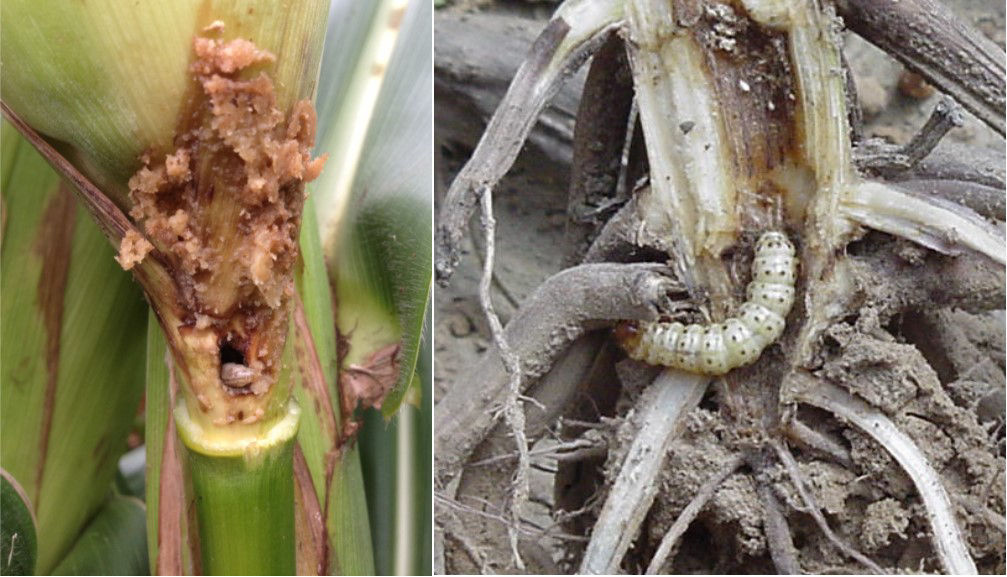
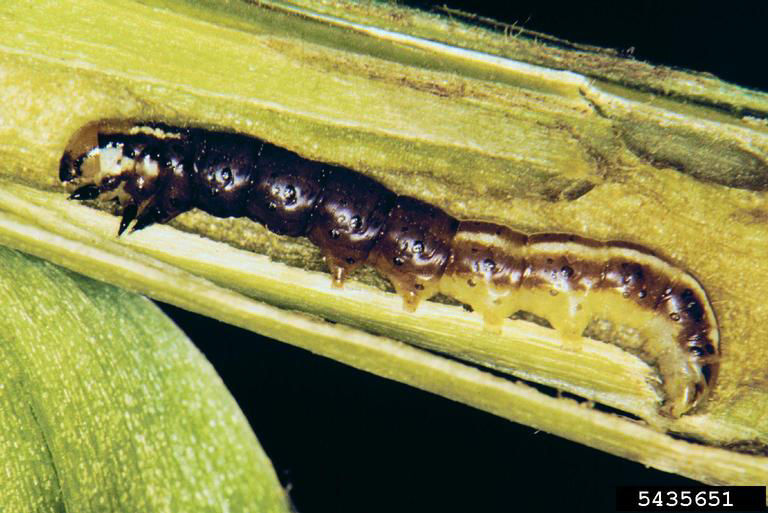
Moldy corn
Corn contaminated by aflatoxin has been infected by either Aspergillus flavus or Aspergillus parasiticus. These molds often occur when insects feed on corn ears during droughty, high-temperature conditions. A felt-like, greenish-yellow to yellowish-brown mold can be found near insect damage on or between kernels (Figure 12). Sampling for Aspergillus can be done during grain loading by passing a cup multiple times within a stream of grain. Multiple samples should be taken, as distribution is not even within the field. Rapid tests are available for in-field testing.2 It is important to know that Aspergillus may be present without the development of aflatoxin.
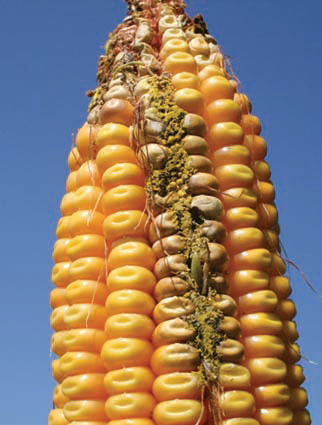
Ragged-edged corn leaves or leaves with ragged holes
Leaves with ragged edges or ragged holes (Figure 13) may be evidence of fall armyworm (FAW) feeding pre-tassel. Grasshopper feeding can mimic FAW feeding and is more likely to be seen during harvest than FAW.

Sources:
12019. Stink bug kernel injury. The Ohio State University. Troubleshooting Abnormal Corn Ears. https://u.osu.edu/mastercorn/stink-bug-kernel-injury/
2Wrather, A., Sweets, L., Bailey, W., Claxton, T., Sexten, J., and Carlson, M. 2010. Aflatoxins in corn. University of Missouri Extension. G 4155. https://extension2.missouri.edu/g4155
3Nielsen, B. and Colville, D. 1988. Stalk lodging in corn: Guidelines for preventive management. Agronomy Guide. Purdue University. AY-262. https://www.extension.purdue.edu/extmedia/AY/AY-262.html.
4O’Day, M., Becker, A., Keaster, A., Kabrick, L., and Steffey, K. 1998. Corn insect pests – A diagnostic guide. University of Missouri Extension. https://mospace.umsystem.edu/xmlui/bitstream/handle/10355/16081/CornInsectPests.pdf?sequence=1&isAllowed=y.
5Dean, A. and Hodgson, E. Stalk borer. Integrated Crop Management. Iowa State University Extension and Outreach. https://crops.extension.iastate.edu/encyclopedia/stalk-borer.
6Bessin, R. 2019. Fall armyworm in corn. University of Kentucky College of Agriculture, Food and Environment, Lexington, KY. Entfact-110. https://entomology.ca.uky.edu/files/efpdf1/ef110.pdf
Web sources verified 10/11/23. 1215_178659